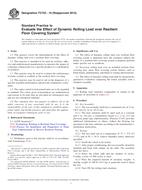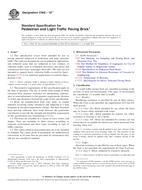1.1 This test method covers the simultaneous determination of 20 alloying and residual elements in carbon and low-alloy steels in the concentration ranges shown (Note 1).
| Concentration Range, % | ||
| Element | Applicable Range, %A | Quantitative Range, %B |
| Aluminum | 0 to 0.075 | 0.02 to 0.075 |
| Arsenic | 0 to 0.1 | 0.05 to 0.1 |
| Boron | 0 to 0.007 | 0.002 to 0.007 |
| Calcium | 0 to 0.003 | 0.001 to 0.003 |
| Carbon | 0 to 1.1 | 0.08 to 1.1 |
| Chromium | 0 to 2.25 | 0.02 to 2.25 |
| Cobalt | 0 to 0.18 | 0.008 to 0.18 |
| Copper | 0 to 0.5 | 0.04 to 0.5 |
| Manganese | 0 to 2.0 | 0.10 to 2.0 |
| Molybdenum | 0 to 0.6 | 0.03 to 0.6 |
| Nickel | 0 to 5.0 | 0.02 to 5.0 |
| Niobium | 0 to 0.085 | 0.02 to 0.085 |
| Nitrogen | 0 to 0.015 | 0.004 to 0.015 |
| Phosphorous | 0 to 0.085 | 0.02 to 0.085 |
| Silicon | 0 to 1.15 | 0.07 to 1.15 |
| Sulfur | 0 to 0.055 | 0.01 to 0.055 |
| Tin | 0 to 0.045 | 0.01 to 0.045 |
| Titanium | 0 to 0.2 | 0.004 to 0.2 |
| Vanadium | 0 to 0.3 | 0.004 to 0.3 |
| Zirconium | 0 to 0.05 | 0.02 to 0.05 |
A Applicable range in accordance with Guide E 1763 for results reported in accordance with Practice E 1950.
B Quantitative range in accordance with Practice E 1601.
Note 1 – The concentration ranges of the elements listed have been established through cooperative testing of reference materials. Included, in addition to the original data of Test Method E 415 – 71, are data from cooperative testing of a broader range of reference materials to expand the element concentration ranges.
1.2 This test method covers analysis of specimens having a diameter adequate to overlap the bore of the spark stand opening (to effect an argon seal). The specimen thickness can vary significantly according to the design of the spectrometer stand, but a thickness between 10 mm and 38 mm has been found to be most practical.
1.3 This test method covers the routine control analysis in iron and steelmaking operations and the analysis of processed material. It is designed for chill-cast, rolled, and forged specimens. Better performance is expected when reference materials and specimens are of similar metallurgical condition and composition. However, it is not required for all applications of this standard.
1.4 This standard does not purport to address all of the safety concerns, if any, associated with its use. It is the responsibility of the user of this standard to establish appropriate safety and health practices and determine the applicability of regulatory limitations prior to use.
Product Details
- Published:
- 06/01/2008
- Number of Pages:
- 9
- File Size:
- 1 file , 110 KB
- Redline File Size:
- 2 files , 210 KB


